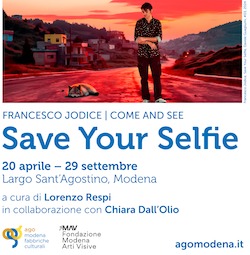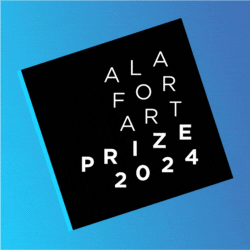[nemus_slider id=”66291″]
—
In occasione della sua mostra Eternal Garden alla Galleria Sara Zanin Z2O di Roma (fino al 10 giugno), abbiamo fatto un’intervista all’artista russo Evgeny Antufiev.
“Ci si può appoggiare con leggerezza da un oggetto all’altro o riposare gli occhi sulla parete, come farfalle.
Quella di Evgeny Antufiev è una mostra lieve e emblematica che ricalibra il progetto presentato a Manifesta con significative variazioni spaziali e nuove opere.
I protagonisti sono sempre loro: la farfalla e suo compagno di viaggio, lo scrittore Nabokov. Nel suo valore simbolico, la farfalla è da sempre, in molte culture, associata alla compenetrazione tra visibile ed invisibile, punto d’incontro tra il finito e l’eternità, tra l’umano ed il divino, segno di mutamento, di metamorfosi e di rinascita.” (Estratto dal testo scritto per la mostra di Marina Dacci)
ATP: Farfalle e Vladimir Nabokov sono i compagni di viaggio di questa tua ricerca, iniziata all’ultima Manifesta e ora a Roma. Cosa lega le farfalle al noto scrittore?
Evgeny Antufiev: Nabokov ha collezionato farfalle per tutta la vita. Ha anche scoperto nuove specie. Molti scienziati lo conoscevano come ricercatore specializzato in farfalle, non come scrittore. Ha lavorato ad Harvard su una collezione di farfalle e scritto testi teorici. Erano le sue compagne, quasi ogni mattina usciva a caccia.
Mi piace l’ironia del fatto che lui sia diventato come una farfalla appuntata sul velluto, studiato da ogni lato. Le sue scarpe, il suo pince-nez, sono nel museo, come avvizziti. Le sue cose sono vendute alle aste. Un numero incredibile di libri e la sua intera corrispondenza sono stati tradotti, fino all’ultima lettera. Il cacciatore si è trasformato in vittima, ora è lui a stare in vetrina.
ATP: “Eternal Garden” è il titolo della tua mostra alla galleria Z2O Sara Zanin. A cosa si riferisce il titolo? Che valore dai al concetto di “eterno” in relazione alla brevità della vita?
EA: Inizialmente stavo preparando un progetto per Manifesta a Zurigo. Quest’anno l’idea di manifesto si estrinseca nel lavorare sulla professionalità di una persona. Io ho lavorato con il pastore Martin Rush. E’ stata un’esperienza fantastica. Abbiamo parlato e corrisposto moltissimo. Volevo riflettere sui temi dell’immortalità, eternità e natura allo stesso tempo. Il risultato è stato un progetto piuttosto complesso che non includeva solo Nabokov, ma anche una collezione di francobolli, un pastore e citazioni dalla Bibbia, fiori provenienti da un giardino cieco, agate prelevate dallo studio di Sigmar Polke, lucenti come le ali delle farfalle.
Ovviamente tutto questo non entrava nella galleria, quindi ho sviluppato il progetto di una mostra più dedicata a Nabokov, che include anche lavori creati appositamente per la mostra.
ATP: A Manifesta hai esposto in un luogo molto particolare, la Wasserkirche. Quanto ti ha influenzato il fatto che fosse una ex chiesa?
EA: Il lavoro nella chiesa è stato fantastico. Non avrei mai potuto immaginare di esporre in una chiesa e invece è successo, ed è venuta fuori una bella mostra. Soprattutto sono grato a tutte le persone della chiesa che mi hanno aiutato nella preparazione della mostra! Erano tutti molto entusiasti. Mi hanno aiutato a realizzare una farfalla gigante, hanno portato attrezzi, prestato molti spazi della chiesa per l’esposizione. Siamo anche stati autorizzati a posizionare sull’altare un vaso che ho scavato personalmente da un albero e abbiamo cambiato i fiori ogni settimana. E non dimenticherò mai le conversazioni con il parroco, tutt’ora ci scriviamo lettere e cartoline.

ATP: La farfalla ha un valore simbolico molto denso, rintracciabile in tante culture diverse. Che significato dai tu a questo insetto?
EA: In realtà devo dire che gli insetti mi fanno paura, cerco di non averci a che fare. Sono belli, ma con tutti quei peli, quelle gambe ridicole, tutti quegli occhi, parti del corpo assurde, sono belli ma terribili al tempo stesso. Come le nostre città o parti della natura che divora tutto. Nabokov diceva che non si dovrebbero sottovalutare le farfalle, possono fare cose terribili.
Le farfalle hanno vite molto brevi, ma ne hanno tre, come bruco, crisalide e farfalla. Anch’io vorrei vivere tre vite diverse.
ATP: Per quanto riguarda Nabokov, invece, ti identifichi nel suo essere “l’uomo/ farfalla” che non crede nel tempo? Lui affermava che la gioia più grande dell’assenza di tempo, in un luogo qualsiasi, è quando si trovava tra farfalle e piante.
EA: Una bellissima metafora! Ma forse non potrei vivere tra i fiori e le farfalle. Immagina solamente tutte quelle centinaia di fiori depravati, migliaia di occhi di insetti ingordi. Preferisco un museo, le nature morte, vetrine e scatole. Dove il tempo non agisce. Come parte dello studio per questa mostra, sono stato all’università di Losanna, e ho lavorato su una collezione di farfalle. In questa università sono raccolte, credo, 4500 farfalle uccise da Nabokov – soltanto farfalle svizzere, perché parte della sua collezione è custodita ad Harvard, e alcune sono ancora nella sua casa.
Potrei vivere in una di quelle scatole, nel magazzino del museo, dove la temperatura non supera mai i 7 gradi.
ATP: Hai soggiornato nella stanza d’albergo che divenne la casa effettiva di Nabokov. Cosa hai provato in quel luogo? Ci racconti la tua esperienza?
EA: In generale, la stanza di Nabokov non vive una grande popolarità, dato che non è così lussuosa come altre stanze dell’hotel. E’ stata una strana esperienza, non è una stanza grande ma ci visse per 16 anni. Questa esperienza è diventata parte della mostra perché quando ero lì ero solito giocare alle ombre cinesi sul muro, così ora una delle mie notti lì è congelata per sempre attraverso la documentazione.
Sono molto interessato alla “fenomenologia degli hotel”. Negli hotel, in particolare se non si possono aprire le finestre, il mio corpo si blocca come se fosse sospeso nel mezzo della stanza. Mi sembra che non esista il tempo dentro gli hotel. Intendo quelli lussuosi, pieni di tappeti e marmi. Quando si è in uno economico invece, vorresti solo scappare. Non è eternità ma entropia. Mentre in quelli costosi, guardi dalla finestra e ti sembra di vedere un ologramma, senza differenza se davanti alla finestra hai passato un minuto o un’ora.
Per caso, oltre alla stanza di Nabokov, recentemente sono stato in una stanza al Savoy Hotel di Londra che è stata filmata da Claude Monet. Ho anche visitato la stanza dove Mussolini è stato confinato dopo l’arresto e dove ha tentato di tagliarsi le vene. C’è ancora lo stesso bagno. Sto pianificando di visitare l’hotel dove Oscar Wilde ha passato i suoi ultimi giorni. E tristemente la sua camera misera (Wilde, come sappiamo, morì in povertà) è stata rinnovata recentemente, tutto è stato riempito con mobili dorati, velluti e tende pesanti. Un’azzeccata amara metafora della sua vita.

EVGENY ANTUFIEV — Eternal Garden
Sara Zanin Z2O, Rome
Until June 10th, 2017
“One can fly lightly from one object to the other, or just rest one’s gaze on the wall, like butterflies. Evgeny Antufiev’s is an airy and emblematic exhibition reworking the project shown at Manifesta with relevant spatial variations and new works.
The protagonists are the same: the butterfly and its travel companion, the writer Nabokov. In its symbolic value, the butterfly has always been associated in many cultures with the compenetration between visible and invisible, the meeting point between the finite and eternity, human and divine, the mark of change, metamorphosis and rebirth.” (Excerpted from the text by Marina Dacci)
ATP: Butterflies and Vladimir Nabokov are your travel companions in this research, started at last Manifesta and now in Rome. Which is the connection between butterflies and the famous writer?
Evgeny Antufiev: Nabokov collected butterflies all his life. He discovered several new species. Many scientists knew him as a researcher of butterflies, not a writer. He worked at Harvard over a collection of butterflies, wrote theoretical works. They were his elders, almost every morning he went out hunting.
I like the irony that he turned into a dry butterfly, which is studied from all sides. His shoes, a pince-nez in the museum are just as pinched. His things are sold at auctions. An incredible number of books, translated his entire correspondence down to the smallest letter. There is something painful about this. The hunter turned into a victim. Now he is in the window.
ATP: “Eternal Garden” is the title of the exhibition at Z2O Sara Zanin gallery. What does the title refer to? Which value do you assign to the concept of eternity in relationship with the brevity of life?
EA: Initially, I was preparing a project for Manifesta in Zurich. This year the idea of a manifesto is working with a person’s profession. I worked together with pastor Martin Rush. It was a fantastic experience. We talked a lot and corresponded. I wanted to reflect on the themes of immortality, eternity and nature at the same time. The result was a rather complex project involving not only Nabokov, but also a collection of stamps, a pastor, and quotations from the bible, flowers from a blind garden, Agate stones from the studio of Sigmar Polke, , bright as the wings of butterflies.
Of course, all this did not fit in the gallery, so I developed an adapted exhibition which is more dedicated to Nabokov and includes works made specifically for the show.
ATP: At Manifesta you displayed your works in a very peculiar place, the Wasserkirche. How much did the fact that it was a former church affect you?
EA: The work in the church was wonderful. I could never imagine my exhibition in a church, and now it happened and it turned out that way. Most of all I am grateful to all people from the church who helped in the preparation of the exhibition! They were really enthusiastic. They helped making a giant butterfly, brought tools, lent many of the premises of the church for the exhibition. We were allowed to put a vase that I cut out of a tree on the altar and changed the flowers in it every week.
And I will never forget our conversations with the pastor, we still send cards to each other.
ATP: Butterflies have a very deep symbolical meaning, to be found in very different cultures. Which is the meaning you give to this insect?
EA: Actually, insects scare me, I try not to treat them. They are beautiful, but all these hairs, ridiculous legs, eyes, ridiculous parts. They are beautiful and terrible at the same time. Like our cities or parts of the devouring nature. Nabokov said that you should not underestimate butterflies, they can do terrible things.
Butterflies have a very short life, but they have three, a caterpillar, a cocoon, a butterfly. I, too, would like to live three lives.
ATP: Regarding Nabokov instead, do you identify yourself with his sense of being a “man/butterfly” who does not believe in the concept of time? He said that the biggest delight of the absence of time, in every place, was when he was surrounded by plants and butterflies.
EA: A wonderful metaphor! But maybe I could not live among the flowers and butterflies. Just imagine all these hundreds of depraved flowers, thousands of greedy insect eyes. I prefer a museum, dead nature, shop windows and boxes. Where time does not rule. As part of the study of this exhibition, I went to the University of Lausanne, studied there a collection of butterflies. In this university are collected, in my opinion 4,500 of the butterflies killed by Nabokov – these are only Swiss butterflies, because part of his collection is kept in Harvard, and some are still at his place.
I could live in one of these boxes, in the museum storage room, where the temperature never rises above 7 degrees.
ATP: You stayed in the hotel room that became Nabokov’s real home. What did you feel in that space? Could you tell us a bit more about this experience?
EA: In general, Nabokov’s room does not enjoy such great popularity, because it is not as luxurious as other rooms in this hotel. Strange experience, it is not a big room but he lived there for 16 years. This experience became part of exhibition because, when I was there, I used to do little shadow theater on the wall. So now one of my night there is frozen forever through its documentation.
I’m really interested in “hotel phenomenology”. In hotels, particularly if I can’t open the windows, my body freezes as if suspended in the middle of the room. I feel there’s no time in hotel rooms. I mean luxurious hotels full of carpets and marbles. When in a cheap one, you wish to escape. It is not eternity but entropy. While in expensive ones, you look from the window, but it is like a hologram, with no difference if a minute or an hour has passed.
Incidentally, in addition to Nabokov’s room, I recently visited a room at the Savoy Hotel in London, which was filmed by Claude Monet. I also happened to visit the room where Mussolini was kept after the arrest and where he tried to open his veins. You can still find the same bathroom. I plan to visit the hotel where Oscar Wilde spent his last days. And sadly his miserable room (Wilde, as we know, was dying of poverty) has now been repaired, everything has been filled with gold furniture, velvet, and heavy curtains. A good mournful metaphor for his life.













